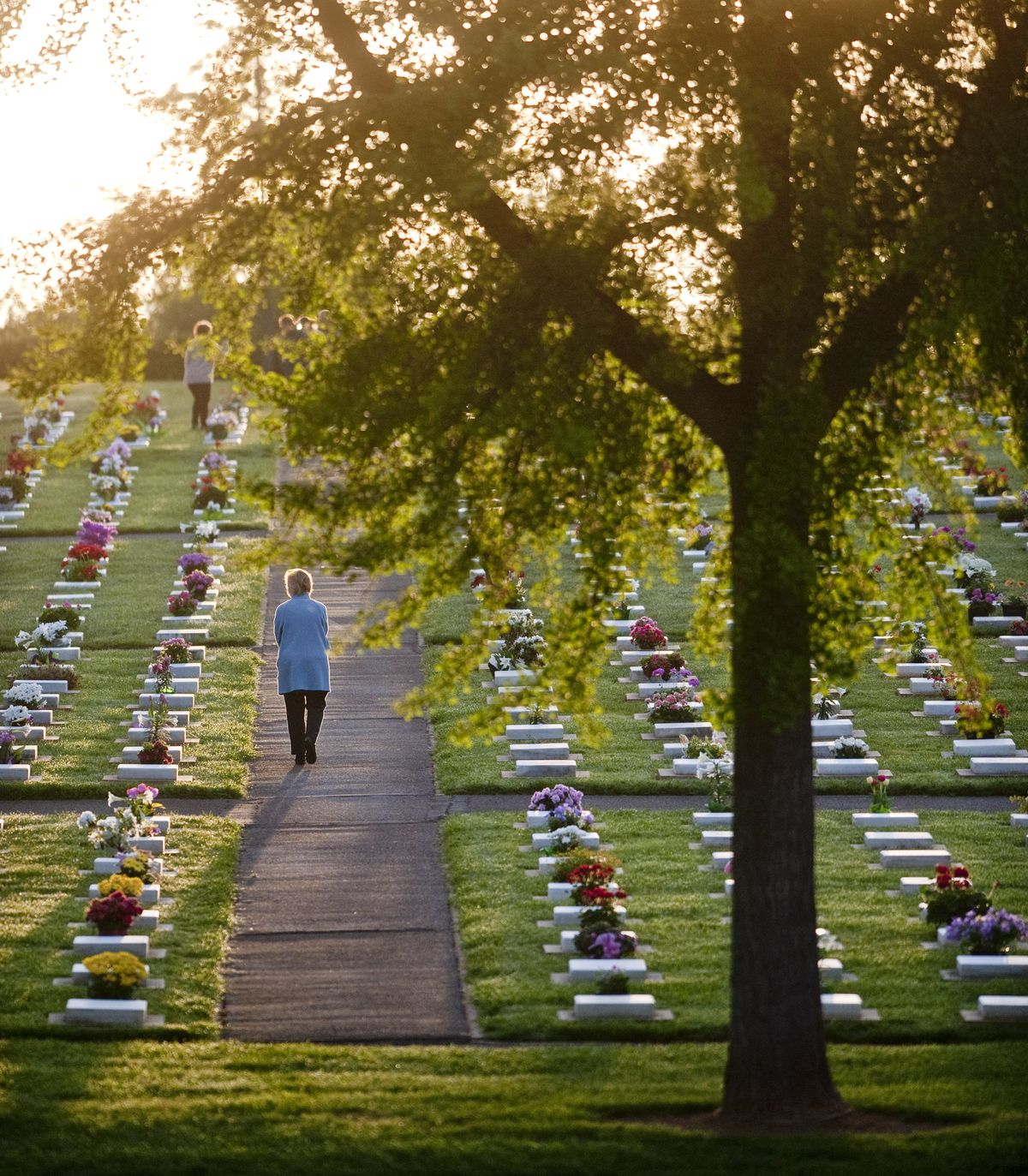Moravian Easter has big brass sound
N.C. service includes hundreds on trumpets, tubas, trombones

WINSTON-SALEM, N.C. – As the sun rose Sunday on an old Moravian cemetery in North Carolina, 310 musicians with trumpets, tubas and trombones played in unison while thousands sang, “Hallelujah, praise the Lord” in an Easter scene mostly unchanged since before the Revolutionary War.
The Moravian churches in Winston-Salem celebrated Easter at sunrise for the 240th time, a streak unbroken by rain, freezing temperatures or the Civil War.
“To have 8,000 to 10,000 people come together like this in a worshipful atmosphere is just remarkable,” said I.B. Southerland, a Moravian church member who organized and deployed about 160 ushers who keep the overflow crowds moving through the narrow streets and paths of the cemetery known as God’s Acre.
It’s one of the oldest and possibly the largest such ceremony in the U.S. It starts well before dawn for the members of the Moravian Church, whose ancestors settled here in the 18th century, concentrated in a part of the city now called Old Salem, with brick sidewalks and Colonial buildings.
Each day of Easter Week the Moravians have a distinctive church service, culminating in the weekend that sees hundreds of members cleaning and decorating the distinctive gravestones, whose uniformity symbolizes the equality of believers before God.
It’s Sunday morning, though, that really sets this celebration apart. Brass bands assemble at Moravian churches across the city shortly after midnight, and at 1:45 a.m. they all play “Sleepers, Awake,” before setting off on a two-hour circuit of their neighborhoods, stopping to play hymns and chorales on street corners and at familiar landmarks.
“This is the best day of the year,” Andrew Halverson, who directs the brass band at Ardmore Moravian Church, told his musicians before they headed into the early morning darkness.
The brass bands are a crucial component of Moravian worship, and the first one was organized in the 18th century, with six members. Today, nearly 400 are on the official membership roll, but not all of them make it to the Easter service.
The church bands have been making the same routes for decades and tend to stick with them regardless of what may change; one band stops every year at the site of what was once a bustling hotel, but today is a parking garage.
“Moravians are stuck on tradition,” said Dick Joyce, 62, who started playing trumpet in the brass bands as a 12-year-old. “It worked 240 years ago, so we keep doing it.”
After all the bands made their rounds, they converged on the Moravian Home Church in Old Salem to eat breakfast around 4 a.m. and prepare for the sunrise service. By 6:15, a huge crowd had gathered to hear the Rev. John Jackman step out on a bare platform and announce, “The Lord is risen,” responding, “The Lord is risen indeed.”
Moravians first came to North Carolina in the 18th century, when believers began arriving in the American colonies. The Moravian Church itself, while a Protestant denomination, predates the Reformation by decades. It was formed in 1457 by followers of the Czech religious reformer Jan Hus, who protested what he saw as flaws in the Roman Catholic Church.